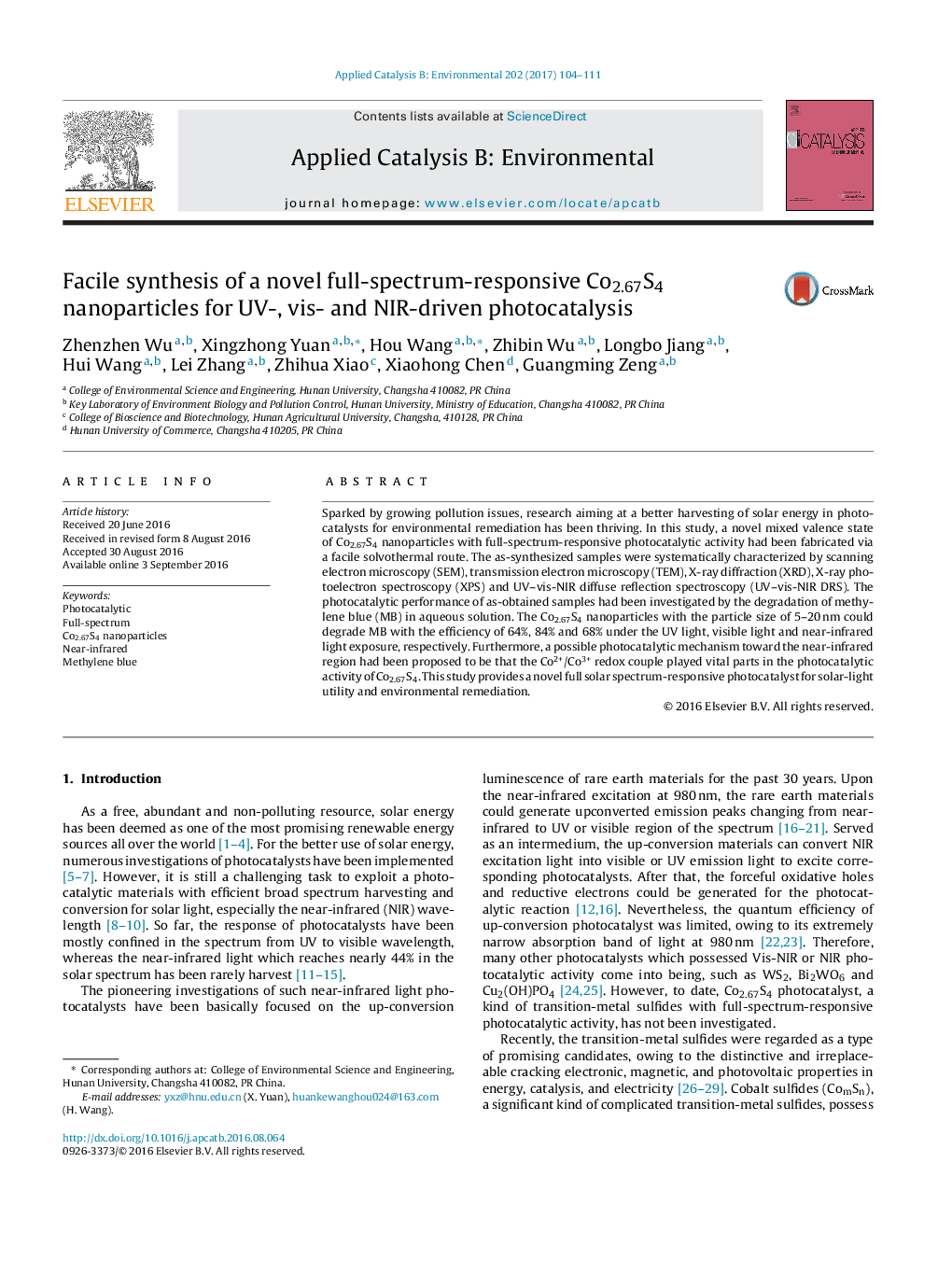| Article ID | Journal | Published Year | Pages | File Type |
|---|---|---|---|---|
| 6454809 | Applied Catalysis B: Environmental | 2017 | 8 Pages |
â¢Novel full-spectrum-response Co2.67S4 was fabricated by facile solvothermal route.â¢Co2+/Co3+ redox couple was the predominant mechanism in photocatalytic process.â¢O2â and OH formed in the photocatalytic process led to the MB degradation.
Sparked by growing pollution issues, research aiming at a better harvesting of solar energy in photocatalysts for environmental remediation has been thriving. In this study, a novel mixed valence state of Co2.67S4 nanoparticles with full-spectrum-responsive photocatalytic activity had been fabricated via a facile solvothermal route. The as-synthesized samples were systematically characterized by scanning electron microscopy (SEM), transmission electron microscopy (TEM), X-ray diffraction (XRD), X-ray photoelectron spectroscopy (XPS) and UV-vis-NIR diffuse reflection spectroscopy (UV-vis-NIR DRS). The photocatalytic performance of as-obtained samples had been investigated by the degradation of methylene blue (MB) in aqueous solution. The Co2.67S4 nanoparticles with the particle size of 5-20Â nm could degrade MB with the efficiency of 64%, 84% and 68% under the UV light, visible light and near-infrared light exposure, respectively. Furthermore, a possible photocatalytic mechanism toward the near-infrared region had been proposed to be that the Co2+/Co3+ redox couple played vital parts in the photocatalytic activity of Co2.67S4. This study provides a novel full solar spectrum-responsive photocatalyst for solar-light utility and environmental remediation.
Graphical abstractDownload high-res image (148KB)Download full-size image
